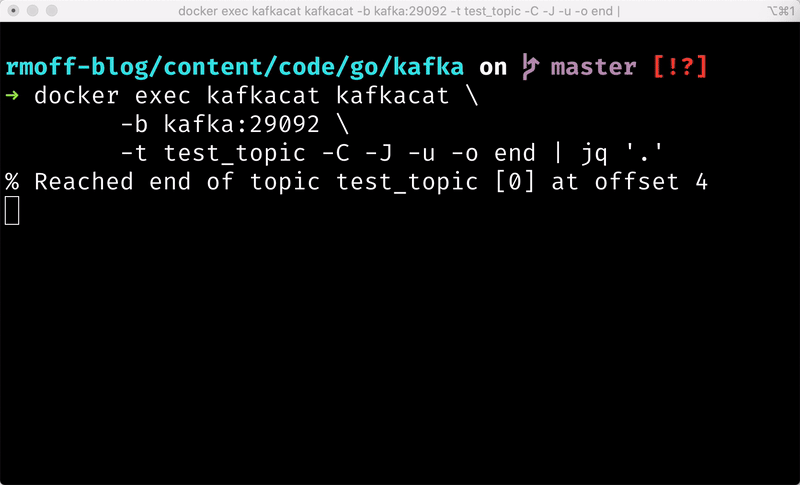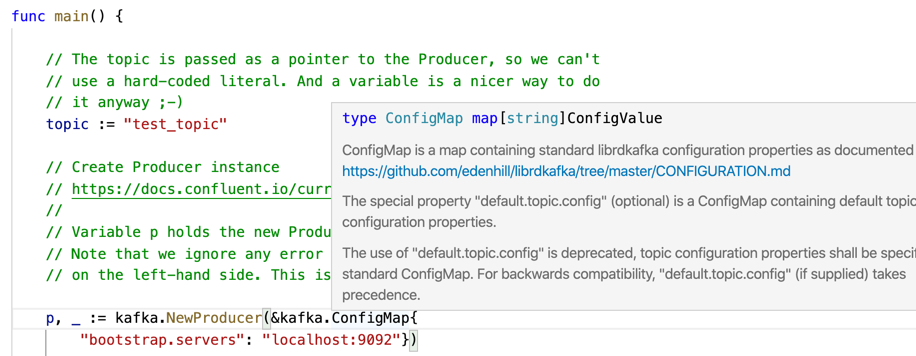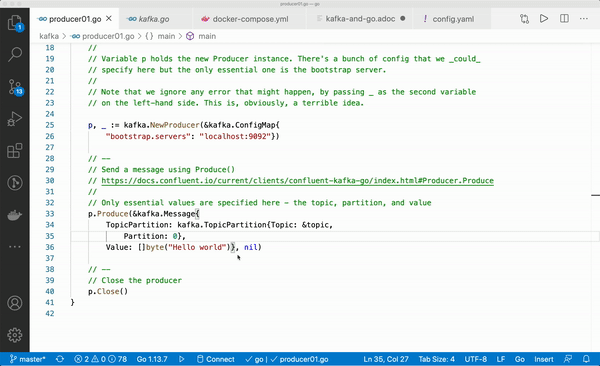
To install the Confluent Go client you need to run
go get gopkg.in/confluentinc/confluent-kafka-go.v1/kafkaWith that done, we can run our first Kafka Go code! Make sure you’ve got a local Kafka broker running first, and then give this a spin:
package main
import (
"gopkg.in/confluentinc/confluent-kafka-go.v1/kafka"
)
func main() {
// --
// The topic is passed as a pointer to the Producer, so we can't
// use a hard-coded literal. And a variable is a nicer way to do
// it anyway ;-)
topic := "test_topic"
// --
// Create Producer instance
// https://docs.confluent.io/current/clients/confluent-kafka-go/index.html#NewProducer
//
// Variable p holds the new Producer instance. There's a bunch of config that we _could_
// specify here but the only essential one is the bootstrap server.
//
// Note that we ignore any error that might happen, by passing _ as the second variable
// on the left-hand side. This is, obviously, a terrible idea.
p, _ := kafka.NewProducer(&kafka.ConfigMap{
"bootstrap.servers": "localhost:9092"})
// --
// Send a message using Produce()
// https://docs.confluent.io/current/clients/confluent-kafka-go/index.html#Producer.Produce
//
// Only essential values are specified here - the topic, partition, and value
//
// There is NO handling of errors, timeouts, etc - we just fire & forget this message.
// Did it work? ¯\_(ツ)_/¯
p.Produce(&kafka.Message{
TopicPartition: kafka.TopicPartition{Topic: &topic,
Partition: 0},
Value: []byte("Hello world")}, nil)
// --
// Close the producer
p.Close()
}When you run this, you get a message written to a Kafka topic!

Don’t try this at home! 🔗
Well, try it at home. But don’t take it anywhere near actual code that you need to write. As the comments in the code above show, there is NO error handling, whatsoever. I’m going to explore that in subsequent posts, but want to start at the very simplest example to start with here.


